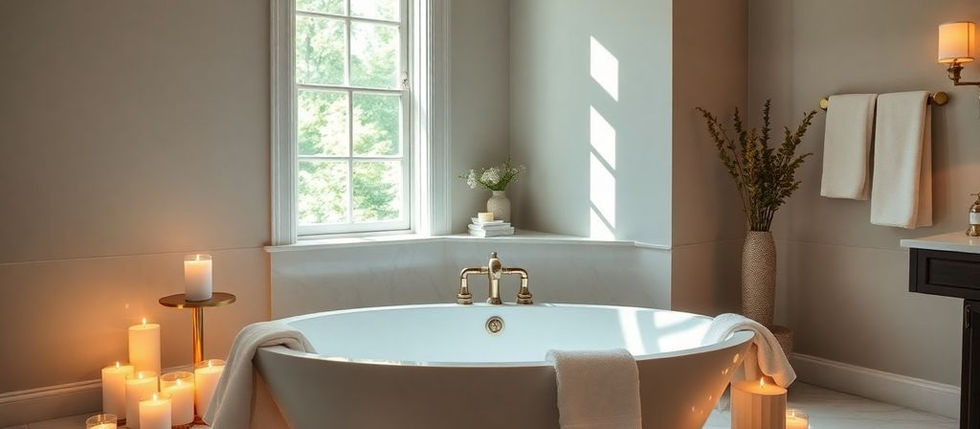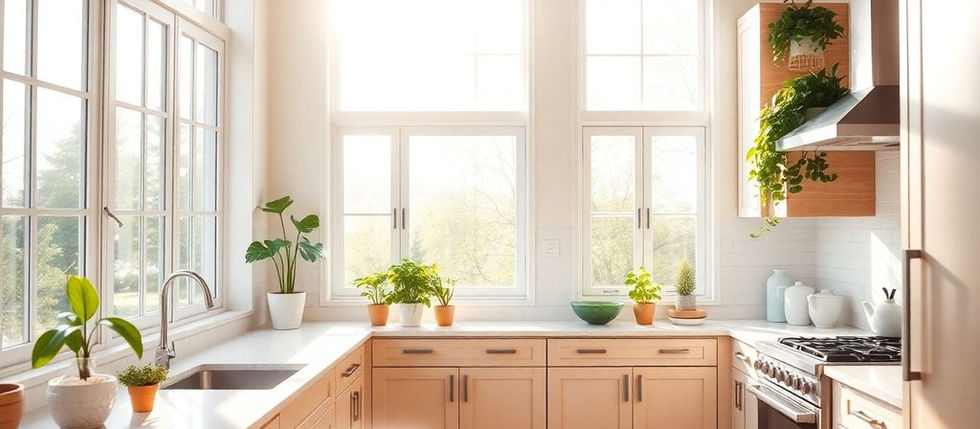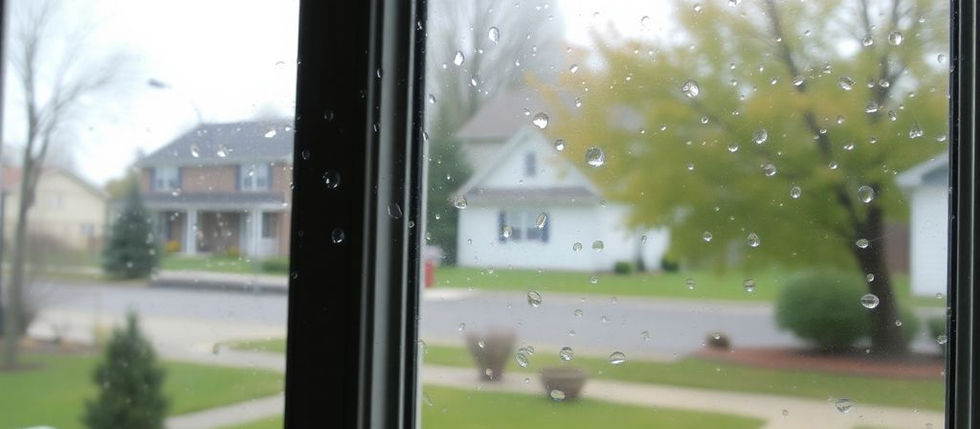Choosing the right flooring for your home is an important decision, especially in Stamford where style and durability matter. Two popular options are laminate and vinyl flooring. Each has its own unique features, benefits, and drawbacks, making it essential to understand their differences before making a choice. This article will explore the basics of laminate and vinyl flooring, compare their costs, durability, design options, and maintenance needs, helping you find the best fit for your home.
Key Takeaways
Laminate flooring mimics natural materials but can be damaged by water, making it less suitable for bathrooms.
Vinyl flooring is waterproof and ideal for areas prone to spills, like kitchens and basements.
Both flooring types are affordable and easy to install, but vinyl offers more design options.
Laminate is durable but may require more maintenance over time compared to vinyl.
When choosing flooring, consider the specific needs of each room in your home.
Understanding the Basics of Laminate and Vinyl Flooring
Composition and Materials
Laminate flooring is a cost-effective option made from layers of materials. It typically consists of wood fibers compressed into a board, topped with a printed image layer that mimics the look of wood or stone. The final layer is a protective wear layer. This makes laminate a great choice for homeowners looking for style on a budget. On the other hand, vinyl flooring is entirely synthetic, making it waterproof and highly durable. It comes in various forms, including planks and tiles, and can imitate natural materials like hardwood and stone.
Design and Aesthetic Options
Both laminate and vinyl offer a wide range of designs. Here are some key points:
Laminate can look like wood, stone, or tile, providing a versatile aesthetic.
Vinyl offers even more variety, with options that can mimic high-end materials at a lower cost.
Both types can be customized to fit different home styles, making them popular choices for homeowners.
Durability and Maintenance
When it comes to durability, laminate and vinyl have their strengths:
Laminate is resistant to scratches but can be damaged by water.
Vinyl is waterproof and can withstand spills, making it ideal for kitchens and bathrooms.
Both types are easy to clean, but vinyl may require less maintenance over time.
Cost Comparison: Laminate vs Vinyl Flooring in Stamford
When deciding between laminate and vinyl flooring, understanding the costs involved is crucial. Both options offer unique benefits, but their price points can vary significantly.
Initial Installation Costs
Laminate Flooring: Generally, laminate flooring is more affordable to install. The average cost ranges from $1.50 to $3.00 per square foot, making it a budget-friendly option for many homeowners.
Vinyl Flooring: Vinyl flooring, particularly luxury vinyl plank (LVP), can cost between $2.00 and $5.00 per square foot. While it may be slightly more expensive, its durability can justify the investment.
Long-term Maintenance Expenses
Laminate: Maintenance for laminate is minimal, requiring only regular cleaning. However, it may need replacement sooner than vinyl in high-moisture areas.
Vinyl: Vinyl is known for its water resistance, making it easier to maintain in kitchens and bathrooms. This can lead to lower long-term costs due to fewer repairs.
Value for Money
In conclusion, when comparing costs, consider not just the initial price but also the long-term benefits and maintenance of each flooring type. This will help you make the best choice for your home.
Durability and Lifespan of Laminate and Vinyl Flooring
Resistance to Wear and Tear
Both laminate and vinyl flooring are designed to withstand daily use. Vinyl is particularly known for its toughness, making it a great choice for busy households. Here’s a quick comparison:
Water and Moisture Resistance
When it comes to moisture, vinyl flooring shines. It is completely waterproof, making it suitable for areas like kitchens and bathrooms. In contrast, laminate can be damaged by excessive moisture, so it’s best to avoid using it in wet areas.
Suitability for High-Traffic Areas
Both flooring types can handle foot traffic, but vinyl is often the better option for high-traffic zones. Here are some key points:
Vinyl is more durable and can resist scratches and dents better than laminate.
Laminate may show wear over time, especially in busy areas.
Vinyl’s water resistance makes it ideal for entryways and kitchens.
Design and Style Options for Stamford Homes
Variety of Patterns and Colors
Laminate and vinyl flooring come in a wide range of patterns and colors. Homeowners can choose from:
Traditional wood looks
Modern tile designs
Unique patterns that stand out
This variety allows homeowners to find the perfect match for their decor.
Mimicking Natural Materials
Both laminate and vinyl are designed to imitate natural materials like wood and stone. This means you can enjoy the beauty of these materials without the high cost or maintenance. For example, luxury vinyl tile (LVT) is a popular choice because it is durable and stylish, making it ideal for homes, especially those with kids and pets.
Customization Possibilities
Customization is another great feature of laminate and vinyl flooring. Homeowners can:
Choose different textures
Select edge styles
Combine colors for a unique look
Installation Process: Laminate vs Vinyl Flooring
DIY Installation Tips
Installing laminate or vinyl flooring can be a fun project if you choose to do it yourself. Here are some tips to help you:
Measure your space accurately to know how much flooring you need.
Prepare the subfloor by ensuring it’s clean and dry.
Lay down an underlayment if required, especially for laminate.
Start from the center of the room and work your way out.
Use a utility knife for cutting planks or tiles to fit.
Professional Installation Services in Stamford
If you prefer to hire someone, consider professional services. Here’s what to expect:
Skilled contractors who know the best practices.
Affordable rates that fit your budget.
Quality installation that ensures your flooring lasts.
Preparation and cleanup after the job is done.
Preparation and Cleanup
Before installation, make sure to:
Remove all furniture and items from the room.
Check for any repairs needed on the subfloor.
Have a plan for cleanup after the installation is complete.
In Stamford, many homeowners choose to hire experts for their flooring needs. This is especially true for engineered hardwood flooring installation in Stamford, where skilled contractors can make a significant difference in the outcome.
Environmental Impact and Sustainability
Material Sourcing and Production
When considering flooring options, it's important to think about where the materials come from. Laminate flooring is often made from wood byproducts, which can be more sustainable. In contrast, the environmental impact of vinyl flooring has been a topic of concern for some time, largely due to its reliance on petrochemicals. Here are some key points to consider:
Laminate uses recycled materials, reducing waste.
Vinyl production can release harmful chemicals.
Sourcing practices vary widely among manufacturers.
Eco-friendly Options
There are several eco-friendly flooring options available today:
Bamboo Flooring: A rapidly renewable resource.
Cork Flooring: Harvested from the bark of cork trees without harming them.
Reclaimed Wood: Repurposed from old buildings, reducing deforestation.
Recyclability and Disposal
Both laminate and vinyl flooring have different end-of-life scenarios:
Laminate can often be recycled, depending on local facilities.
Vinyl is less recyclable and can contribute to landfill waste.
Always check local guidelines for disposal options.
By understanding the environmental impact and sustainability of your flooring choices, you can make a more informed decision that aligns with your values and the needs of your home.
Choosing the Right Flooring for Different Rooms
Best Options for Kitchens and Bathrooms
When selecting flooring for kitchens and bathrooms, water resistance is key. Here are some great choices:
Vinyl Flooring: Completely waterproof and easy to clean.
Tile: Durable and can handle moisture well.
Laminate: Good for kitchens but avoid it in bathrooms due to potential water damage.
Ideal Choices for Living Areas and Bedrooms
For living areas and bedrooms, comfort and style matter. Consider these options:
Hardwood: Offers warmth and elegance.
Laminate: Affordable and stylish, mimicking wood.
Carpet: Soft and cozy, great for bedrooms but requires more maintenance.
Considerations for Basements and Entryways
Basements and entryways face unique challenges. Here’s what to keep in mind:
Vinyl: Perfect for basements due to its moisture resistance.
Laminate: Can work in entryways but ensure it’s not exposed to excessive water.
Tile: A solid choice for both areas, as it’s durable and easy to clean.
In Stamford, homeowners can explore various flooring options for their floor remodeling projects, ensuring they make informed choices that suit their lifestyle and home design.
Maintenance and Care Tips for Laminate and Vinyl Flooring
Routine Cleaning Practices
To keep your floors looking great, follow these simple cleaning tips:
Sweep or vacuum regularly to remove dirt and debris.
Use a damp mop with a gentle cleaner designed for your flooring type.
Avoid using excessive water, as it can damage laminate.
Handling Spills and Stains
When accidents happen, quick action is key:
Blot spills immediately with a clean cloth.
For tough stains, use a mild cleaner and a soft cloth.
Avoid harsh chemicals that can harm the surface.
Preventing Damage and Extending Lifespan
Protect your investment with these easy steps:
Place mats at entryways to catch dirt and moisture.
Use furniture pads to prevent scratches from heavy items.
Regularly check for signs of wear and address them promptly.
By following these maintenance tips, you can ensure that your laminate and vinyl flooring remains in excellent condition for years to come. Remember, vinyl sheet flooring is a durable choice, especially in high-traffic areas, making it a smart investment for families and pet owners.
Taking care of your laminate and vinyl floors is easy! Regular cleaning and avoiding harsh chemicals can keep them looking great for years. For more tips and to explore our flooring options, visit our website today!
Final Thoughts on Laminate vs Vinyl Flooring
In the end, choosing between laminate and vinyl flooring really depends on your needs and what you want for your home. If you’re looking for something that can handle water spills and is easy to clean, vinyl might be the better choice. It comes in many styles that can look like wood or stone, making it a stylish option. On the other hand, if you want a budget-friendly floor that still looks good and can handle a lot of foot traffic, laminate could be perfect for you. Both types of flooring have their own strengths, so think about where you’ll use them and how much care you want to put in. No matter what you choose, both laminate and vinyl can make your home look great!
Frequently Asked Questions
What is laminate flooring made of?
Laminate flooring is made from layers of materials pressed together. It usually has a core made of wood fibers and a top layer that shows a design, like wood or stone.
Is vinyl flooring waterproof?
Yes, vinyl flooring is waterproof. It’s made from synthetic materials, which means it can handle spills and moisture well.
How do I clean laminate flooring?
To clean laminate flooring, sweep or vacuum it regularly to remove dirt. You can also use a damp mop with a gentle cleaner.
Can I install vinyl flooring in my bathroom?
Yes, vinyl flooring is a great choice for bathrooms because it’s water-resistant and can handle moisture.
What are the main differences between laminate and vinyl flooring?
Laminate is made mostly of wood and can be damaged by water, while vinyl is completely synthetic and waterproof. They also have different looks and feels.
How long does laminate flooring last?
With good care, laminate flooring can last about 15 to 25 years, depending on the quality and how much traffic it gets.















Comments